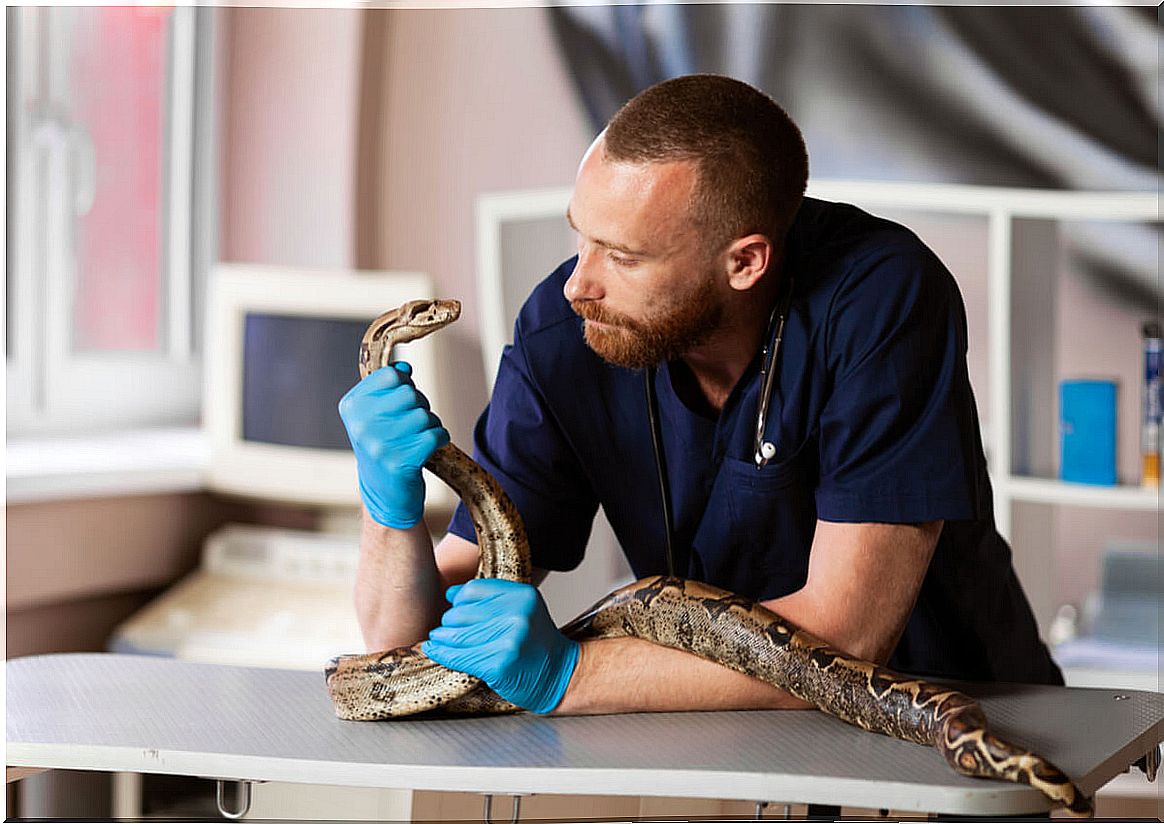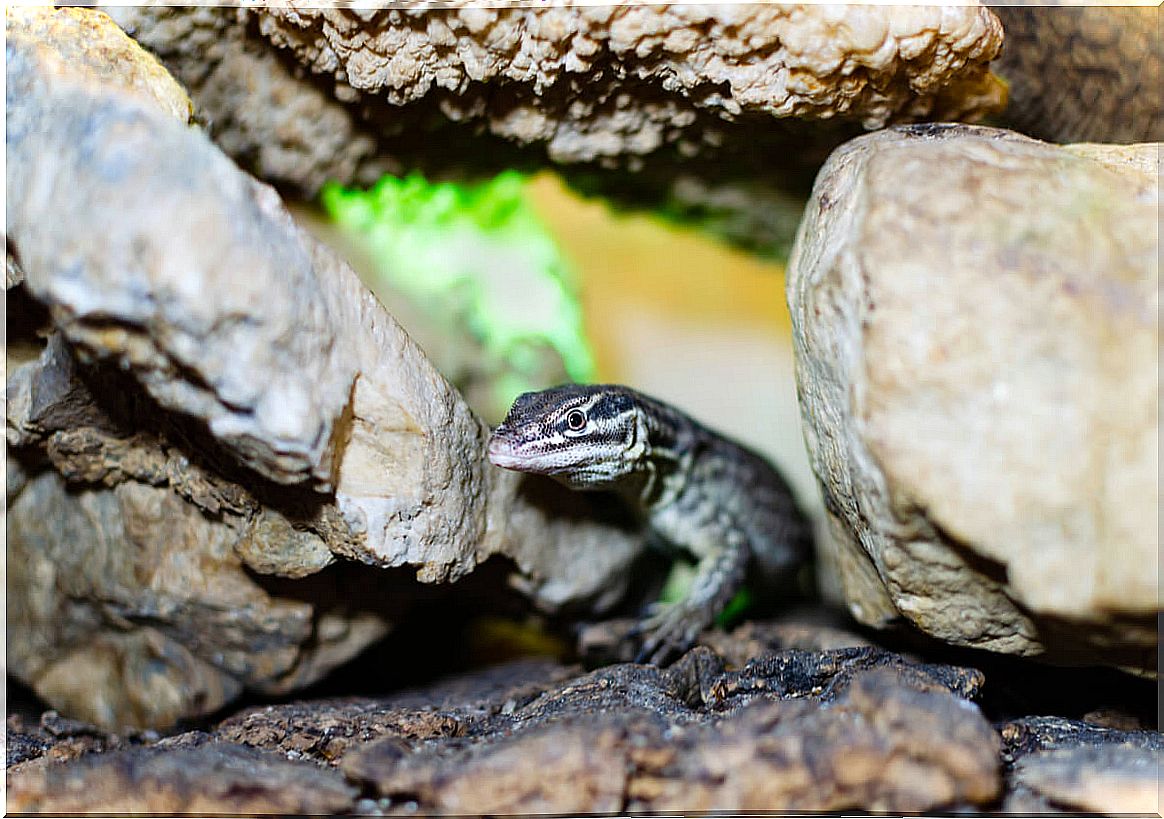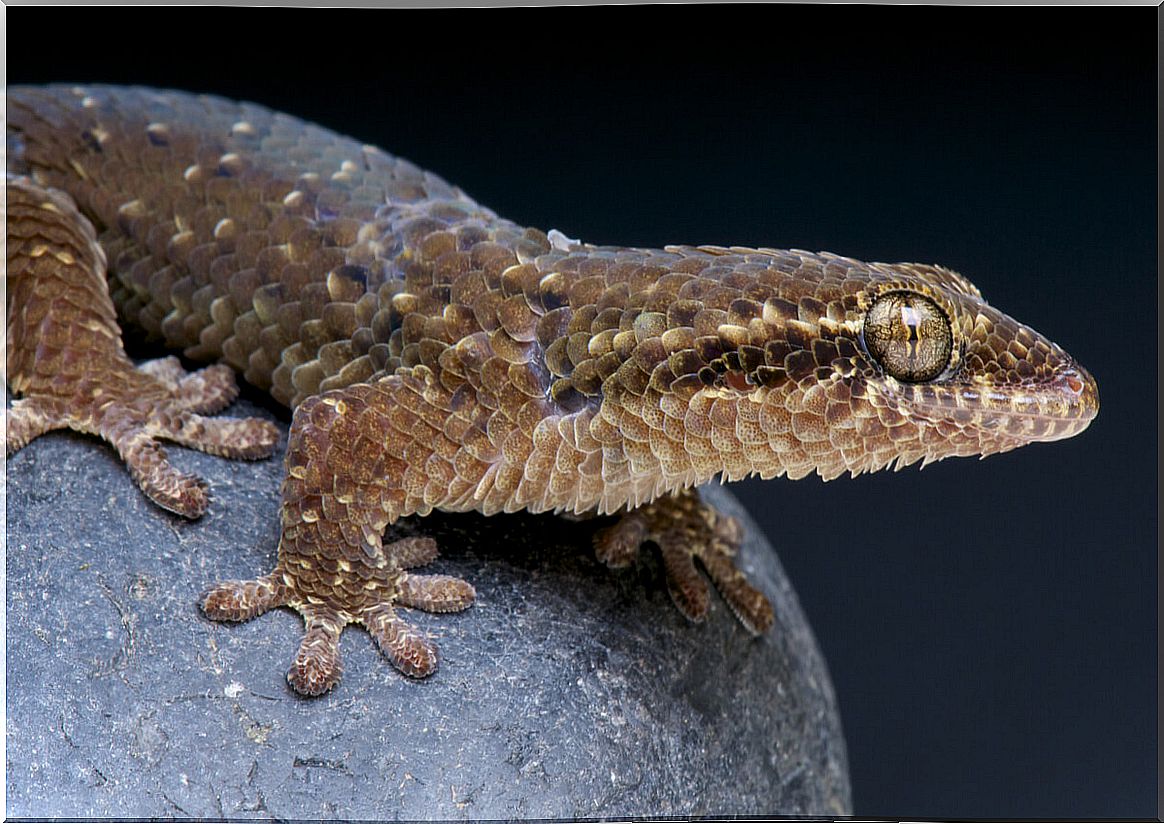Abscesses In Reptiles: Causes, Symptoms And Treatments

Reptile abscesses form when bacterial colonies infiltrate a wound – usually superficial – in the animal. In an attempt to isolate the infection by the immune system, a tissue capsule is created with a high content of white blood cells, which are attacking pathogens.
Mammals present a series of enzymes that are capable of degrading the compounds of the infection, a fact that gives rise to pus that is known to all. In reptiles these biomolecules are not present, so abscesses appear as hard and very obvious balls. In addition, they can appear anywhere on the animal’s body.
Causes of abscesses in reptiles
Typically, abscess formation begins with something as anecdotal as a scratch or attack by a terrarium mate. The immune system is unable to fight the initial infection, the wound becomes infected, and ultimately the abscess forms. It should be noted that this does not always appear near the injury.
The formation of abscesses is favored under stress conditions. When the reptile is not comfortable, its immune system fails, allowing the spread of a previously mild infection. Inadequate climatic conditions in the terrarium, too many specimens in a facility or continuous changes can promote their appearance.
It should be noted that abscesses are categorized into 2 main types: (sub) cutaneous and internal. The former are much more obvious than the latter and are usually the cause of the exotic animal visit to the vet. Unfortunately, internal abscesses can be virtually undetectable, hence their lethal potential.

Symptoms
Symptoms will vary depending on the region where the abscess has occurred. As you can imagine, a formation of hardened pus under the skin has nothing to do with another within the hearing aid, for example. However, some of the most obvious signs can be summarized in the following list:
- A hardened lump under the skin: The affected area is usually reddened and the animal will use its limbs to continually scratch itself.
- Nonspecific signs: depression, lethargy, lack of appetite and apathy, among others. These can be symptoms of many other pathologies in reptiles.
- Difficulty walking and moving, depending on where the abscess occurs.
- Other symptoms: gastrointestinal abscesses cause diarrhea, while lung abscesses manifest with clear difficulty in breathing. An abscess in the brain can be accompanied by seizures and loss of balance.
Diagnosis
To detect abscesses in reptiles, the exotic animal veterinarian will begin by asking the guardian about the habits of the animal and the conditions of its facility. There are many diseases that can be mistaken for an abscess and must be ruled out before proceeding with possible treatment.
It is also common for the professional to obtain a sample from the affected area with a syringe. This will help the diagnosis, as the dead cells observed under the microscope can confirm the pathology. Finally, fluid debris can also be sent to a laboratory, where a Gram stain is performed.
Treatment of abscesses in reptiles
Abscesses that occur in external soft tissues will be removed and cleaned thoroughly by the veterinary professional. Chlorhexidine 1% is usually the most widely used topical antiseptic in these cases. After that, a continuous administration of antibiotics is required to prevent bacteria from proliferating.
Even though a home disinfection is done and the wound remains open, pus may continue to form for the first few days. It is necessary to thoroughly sanitize the area of the injury because, if the infection reappears, it may manifest itself in a systemic and much more aggressive manner.
The antibiotics used in the initial stage are usually broad spectrum, so it is not always guaranteed that the pathogen will disappear with them. If the infection does not resolve, the administration of specific antibiotics intravenously will be explored.

Observation and caution
Skin and subcutaneous abscesses are treatable as long as the infection has not spread to the rest of the body. Unfortunately, an internal abscess, depending on its location, can cause the reptile to die before the guardian realizes that the reptile is sick.
Reptiles are secretive animals, but that is why we must not forget to pay attention to their physiological changes. It is recommended that any guardian assess the general health of their exotic pet at least once a week, although this does not have to involve direct manipulation.









